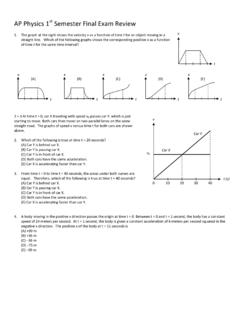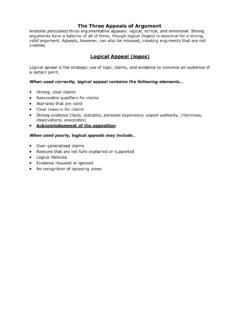Transcription of Bonding Basics - Covalent Bonds
1 Bonding Basics - Covalent Bonds Directions: Using the periodic table, complete the chart for each element. Objective: Create a molecule by diagramming Covalent Bonds (shared electrons) between the elements listed together so that all atoms have a valence (outer) electron shell full of electrons. Recall that the first shell holds 2 e- while all other shells hold 8 e-. Steps: 1. Write out the atomic symbol for each element. 2. Represent the number of electrons in the valence shell using different colored dots around the atomic symbol. 3. Rearrange the electrons to form Covalent Bonds (shared electrons) to fill each atoms outer shell.
2 4. Draw circles around the atoms to represent the valence electron shell. 5. Draw the bond structure using lines and symbols, where each dash represents a Covalent bond (two shared electrons). (1) Hydrogen + Hydrogen (2) Hydrogen + Oxygen + Hydrogen Element (Atomic Symbol) # of Protons # of Electrons # of Valence Electrons # of Electrons to Fill Outer Shell Hydrogen (H) 1 1 1 1 Chlorine (Cl) Carbon (C) Phosphorus (P) Oxygen (O) Sulfur (S) Nitrogen (N) Each Hydrogen atom starts with 1 e- and needs one more e- to fill its valence shell. So sharing a pair of electrons between the atoms fills the outer shell of both atoms creating a stable bond .
3 Bonding Basics - Covalent Bonds (3) Chlorine + Chlorine (4) Oxygen + Oxygen (5) Carbon + Oxygen + Oxygen (6) Carbon + Hydrogen + Hydrogen + Hydrogen + Hydrogen Conclusions: Describe the similarities and differences in the Covalent Bonds that form with Carbon, Hydrogen, Oxygen.



















